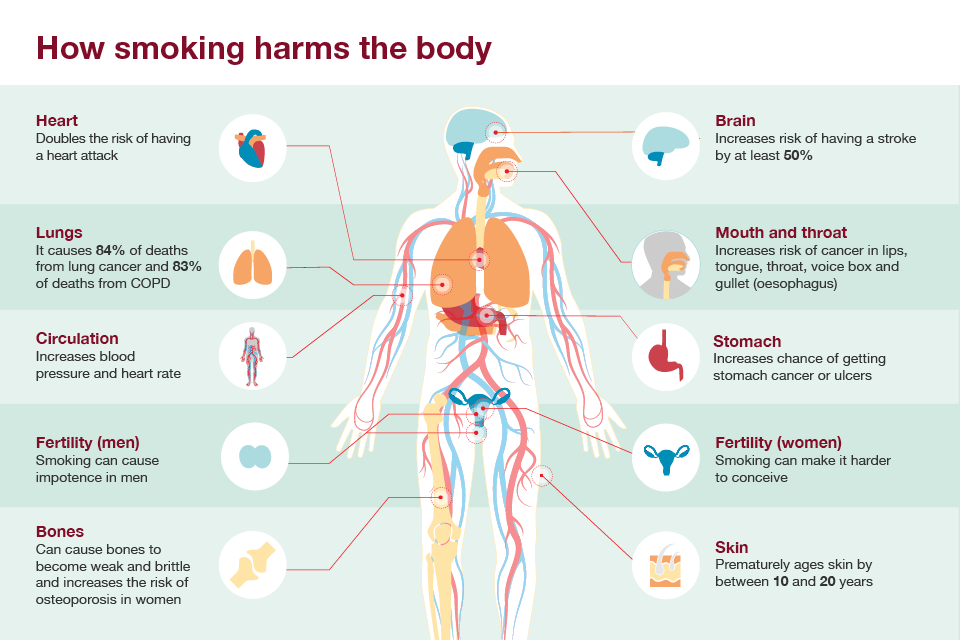Table Of Content

However, based on the experience with cigarettes, similar adverse health effects, including COPD, heart disease, and cancer, can be expected. Anyone considering vaping as a way to quit smoking should aim to eventually stop vaping altogether, not just switch one habit for another. Vaping isn’t risk free for non-smokers and can have harmful health effects, especially on young people. Young people who vape may be more likely to start smoking and find it harder to quit any nicotine use at all.
Secondhand vaping: The latest vaping health risk
Because respiratory health outcomes were reported for last 12 months, it is possible that the participants under-reported symptoms occurring many months back. Exposure misclassification was likely to be small as exposure was assessed for the previous 30 days and seems unlikely to have been substantially differential with respect to outcome that could have biased the estimated effects of exposure. Primary vaping or smoking was defined based on participants’ reports of any active vaping or smoking of nicotine or cannabis in the previous 30 days (yes/no) at each wave. Even weaker evidence exists in the literature on the presence of polycyclic aromatic hydrocarbons, crotonaldehyde, acetol, glyoxal, glycidol, and benzaldehyde in e-cig aerosols. Another potential risk posed by vaping indoors is allergic reactions, especially among children.
What does vaping do to your lungs?
People tend to think of vaping as “safer” than smoking, but it’s not safe. Vaping is a little different given that it doesn’t ‘burn’ and there is no ‘smoke,’ Dr, Nakhleh shares, but the process of inhaling these secondhand fumes is essentially the same. “All e-cigarettes heat up this inner battery-charged chamber that is then used to heat up a juice or e-liquid at very high temperatures—which ultimately releases this vapor,” he continues. Surgeon General noted that between 1964 and 2014, 2.5 million people died from exposure to secondhand smoke. When you breathe the same air as someone using an e-cigarette, you're "secondhand vaping."
UK ministers vow to close loopholes in disposable vape ban
According to a 2017 study, being exposed to even low concentrations of the components of vape aerosol can affect brain and lung development. Secondhand vape aerosol also contains several known carcinogens that may increase the risk of certain cancers. Last week a report said children addicted to vaping should be given nicotine patches or gum to help them break their habit. Public Health Wales, one of the organisations that makes up NHS Wales, said vaping should be seen as a “dependency issue” rather than a deliberate act of misconduct, with young people needing support to quit. There are growing concerns about rising nicotine addiction in young children. Last month the government passed a law to ban smoking for anyone born after 2009, and it is also introducing new restrictions on vapes including banning the sale and supply of disposable vapes under environmental legislation.

That’s because public awareness of the potential health risks of vaping remains low. The FDA reports that 8 in 10 youths don’t see a great risk of harm from regular e-cigarette use. The short answer as to whether vaping will impact indoor air quality is yes. If you vape or allow other people to vape in your home, over time it could pose a risk to your air ducts, which does impact your air quality.
The Mysterious Vaping Illness That's 'Becoming an Epidemic' (Published 2019) - The New York Times
The Mysterious Vaping Illness That's 'Becoming an Epidemic' (Published .
Posted: Tue, 12 Oct 2021 07:00:00 GMT [source]
New to Vaping? Here’s the Ultimate Guide on How to Vape for the First Time

Estimates indicate that more than 70% of inhaled e-cig aerosols are eventually exhaled (143), which may cause secondhand exposures. E-cigs are commonly used in many places, such as homes, cars, restaurants, bars, and workplaces (46), where vulnerable populations, such as children, adolescents, and pregnant women, might be exposed (27, 139). Secondhand exposure in indoor environments is of particular concern because people typically spend more than 80% of their time indoors (64), where emitted pollutants are not diluted as quickly or as extensively as outdoors. Yet, to what extent such secondhand exposures affect human health is unclear. While a large number of health studies on t-cig secondhand smoke exist (55), data from these studies cannot be extrapolated to e-cigs because the emission characteristics are different.
A 2018 study assessed the lung function of 10 people who had never smoked cigarettes immediately after vaping fluids, either with or without nicotine. Unfortunately, today's teens, and even tweens, know more about vaping than their parents. First publicized as a safer alternative to smoking tobacco, vaping caught on because it didn't contain the carcinogens or tars found in most smoking tobacco products. Also, vaping was supposed to eliminate the dangers of secondhand smoke to those nearby. The particles you inhale while vaping can cause inflammation (swelling) and irritation in your lungs. This can lead to lung damage like scarring and narrowing of the tubes that bring air in and out of your lungs.
A 2019 study found that secondhand exposure to aerosol from electronic nicotine delivery systems increased the risk of asthma symptoms and asthma attacks in young people. Particles from vaping, which are liquid rather than solid like smoke particles, don’t seem to affect air quality at all. In a 2017 University of California-San Diego study that analyzed the air in 193 low-income family homes, the researchers found that smoking tobacco or marijuana, cooking, and burning candles all affected particle counts in the homes. But vaping (which was being done in 43 of the homes) had no measurable effect on the indoor air quality. Infants and children, pregnant people, and those with allergies and lung conditions have a higher risk for adverse effects from exposure to secondhand vape aerosol. The long-term effects of smoking cigarettes are well-documented and include an increased risk of stroke, heart disease, and lung cancer.
As of October 2016, 32 countries had banned e-cigs from public spaces (67). In the United States, as of July 1, 2019, 18 states and 861 municipalities have already expanded smoke-free laws to include e-cigs and have prohibited their use in smoke-free places (5). In certain places, such as casinos, bars, and other gaming venues where t-cigs are allowed, e-cig use can even worsen indoor air quality.
And using vaping products alongside other products containing nicotine, like cigarettes, for example, may be even worse for their health. Over the study period, an increase in the prevalence of wheeze and bronchitic symptoms was observed in the study population (not statistically significant). The prevalence increased from 12.3% to 14.9% for wheeze and 19.4% to 26.0% for bronchitic symptoms (figure 2).
Mr. Bragg is arguing that the cover-up cheated voters of the chance to fully assess Mr. Trump’s candidacy. The case — brought by Alvin Bragg, the Manhattan district attorney, against Mr. Trump — represents the first time in our nation’s history that a former president is a defendant in a criminal trial. As such, it has generated lots of debate about the case’s legal strength and integrity, as well as its potential impact on Mr. Trump’s efforts to win back the White House.
According to a 2021 study, exhaled vape particles can persist in the air and mix with the environment indoors. They can also increase concentrations more than 3.6 meters away from the original vaping source. According to the American Heart Association (AHA), research suggests that the use of e-cigarettes may link to respiratory and cardiovascular health issues due to the substances in vape aerosol. This article looks at the risks of secondhand vape exposure, other risks of vaping, and tips for quitting.
Some people vape because they think it’ll help them quit smoking if they’ve already tried other methods and haven’t been able to quit. Unfortunately, you may end up addicted to vaping instead, so the benefits of vaping for smoking cessation may not be as good as they seem. It actually creates an aerosol (or mist) that contains small particles of nicotine, metal and other harmful substances. Measurement error due to self-reported exposure and respiratory outcomes could have occurred.

No comments:
Post a Comment